Discussed in this post: 9 Books (Militant Anti-Fascism; Against the Fascist Creep; Antifa; World Without Mind; A Place in the Country; Troubling Love; Four Quartets; Celan; and Heine); 5 Movies (The Secret Life of Walter Mitty; Evolution; The Transfiguration; Boys in the Trees; and Super Dark Times); 5 Documentaries (Tomorrow We Disappear; The Red Pill; Raising Bertie; Icarus; and The Punk Syndrome).
Books
1. Militant Anti-Fascism: A Hundred Years of Resistance by M. Testa.

This is the first three books I read about fascism and anti-fascism this month. Because I am currently orchestrating an interview and dialogue with the authors, these reviews will be fairly short. M. Testa’s Militant Anti-Fascism looks at the history of anti-fascism in Europe over the last one hundred years. The first half of the book surveys Europe as a whole (from the late 1800s until 1945), and the second half focuses on the UK (from the 1920s to 2014), where Testa has been personally or collectively involved in the struggle (M. Testa may be an individual or multiple authors working collaboratively together under one name). It’s a useful history, in part, because it carries some pretty clear messages about what has and has not worked well in efforts to prevent fascists – and the violence that is inextricably connected to their presence – from establishing themselves within various communities. In particular, militant action, political organization and movement building (including building alliances with other groups), and propaganda are three essential components. Given problems that mainstream society, along with much of the Liberal Left, have with extra-State violence, much of this work is a defense of militancy, its efficacy, and what happens when it is not present. It’s a convincing case. Also convincing is the way this history demonstrates how fascism is premised upon the destruction of the so-called radical Left and the failure of the mainstream Left to do much for people in times of economic crises, whether that was the market collapse at the end of the ‘20s or during the age of austerity constantly deepened and reinforced by neoliberalism. There were a few times when Testa’s participation on the ground, in the midst of the battle, seemed to impact his presentation – arguing, for example, that when fascists attack an anti-fascist bar they fail in their efforts because they are not able to kick the anti-fascists out of the bar but then, on the flip side, arguing that anti-fascists who attack a fascist bar win a conflict because they are able to contain the fascists to the interior of the bar – but, yeah, all history is more than just history and, all told this is a very good work. (Just try and keep track of the names and acronyms because in this history, and the other two I read, there are a lot of them. A lot a lot of them.)
2. Against the Fascist Creep by Alexander Reid Ross.

Against the Fascist Creep also provides an historical overview but, here, the focus is much more heavily on fascism than anti-fascism, with particular emphasis paid to the USofA. Additionally, Reid Ross’ survey covers Europe after 1945 and fills in much that is missing from Testa’s survey. This is significant, in part, because fascism has developed rapidly in much of Eastern Europe after November 9, 1989 (much of that development was also supported by the USofA). However, Reid Ross is not interested in simply providing names and dates and descriptions of events; he is keen to explore the key elements of fascist ideology – its core beliefs, its concomitant spiritualities – because he is exploring the “fascist creep,” i.e. the ways in which fascism creeps into both the political Right and the radical Left. There are remarkable parallels existing between fascism and groups like the Environmental Liberation Front or Derrick Jensen’s and Lierre Keith’s Deep Green Resistance, which Reid Ross trashes in this book (and see here for Reid Ross’ fuller engagement with them). I found this to be especially fascinating and it has given me much to think about in terms of themes that motivate me in the struggle. I am particular interested in the ways in which fascism adopts motifs, tactics, and labels from Indigenous movements of decolonization, although Reid Ross does not touch upon much of that here (and I plan to talk about that more fully with him soon). On the flip side, Reid Ross does a good job of showing fascist influences and overlaps throughout the alt-right, from PEGIDA to MRAs to the Tea Party to Donald Trump. Sometimes, there is so much overlap it becomes difficult to understand how closely we can maintain a separation of definitions between these groups (and, appropriately in my opinion, Reid Ross takes this as proof of the success of the fascist creep). What is facism, what is national socialism, what is white nationalism, what is Christian Conservatism, and where do we draw the lines between all of these things, especially in the age of Trump, T2, Brexit and Putin? At some points, it seems like using the word “fascism” becomes more a question of tactics (and different people from the more radical, antiauthoritarian Left take different positions) than a question of strict definitions. What is certain is that we are facing a large scale public resurgence of fascism today. Maybe it doesn’t look like your granddaddy’s fascism (although at local PEGIDA rallies it seems like mostly granddaddies are into it) but, as Reid Ross shows, fascism has always been invested in taking over the language of the Left (supporting diversity … as a means of arguing against equality, supporting decolonization… as a means of getting immigrants out of Europe, opposing racism… to reassert white power, supporting human rights… to reinscribe patriarchy, and so on). The white laces and red suspenders, the swastikas and skinheads, may have cleaned up a little (or be lurking in the background) but we shouldn’t be fooled by the granddaddy talking about how much he loves his country. That’s the fascist creep.
3. Antifa: The Anti-Fascist Handbook by Mark Bray.
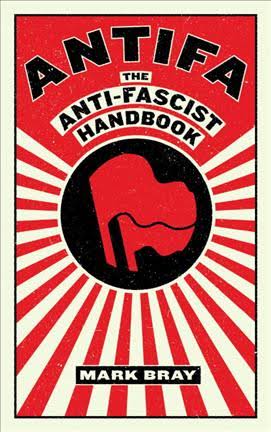
Mark Bray also offers an historical overview of the history of fascism and anti-fascism although he highlights some different elements than Reid Ross and Testa (arguing, for example, that fascism was truly first born in the American South, in the 1860s, with the rise of the KKK and also looking in more detail at the USSR’s problematical influence on anti-fascist struggle). This history is also very up-to-date. I did not feel that reading these three histories back-to-back was redundant in any way. The complimented each other well.
However, in a manner that further compliments Reid Ross (and enriches Testa), Bray focuses much more fully on the ideology and tactics of anti-fascism, and the lessons we can learn from it going forward in the struggle. In light of his historical survey, Bray offers the following five historical lessons for anti-fascists:
- Fascist revolution have never succeeded. Fascists gained power legally (which raises very serious questions and concerns about Liberal approaches to fascism which seem to think that well-reasoned arguments, the police, and governmental institutions will take care of fascism for all of us — the high amount of Greek cops who support Golden Dawn, the high number of white supremacists in police forces in the USofA, and the high levels of violence experienced by Indigenous people in Canada at the hands of various police and paramilitary forces, should also make us reconsider this).
- To varying degrees, many interwar anti-fascist leaders and theorists assumed that fascism was simply a variant of traditional counterrevolutionary politics. They did not take it seriously enough until it was too late (see also: Trump).
- For ideological and organizational reasons, socialist and communist leadership was often slower to accurately assess the threat of fascism, and slower to advocate militant anti-fascist responses, than their parties’ rank-and-file membership (sadly, the Left often only started creating a united Left after fascism was very deeply entrenched and, I think, the entire fracturing of the mainstream Left in the States — between those who want to make it the New Right [Clinton] and those who still want it to be Left-ish [Sanders] — let alone the near total gutting of the radical Left there demonstrates the same process in the USofA).
- Fascism steals from Left ideology, strategy, imagery, and culture (Reid Ross explores this in detail).
- It doesn’t take that many fascists to make fascism (so shut them down while you still can).
From these lessons, Bray turns to discussing controversies related to anti-fascist tactics like no platforming (refusing fascists the ability to organize and speak in any kind of public or semi-public setting) and how that relates to arguments about free speech. He also spends quite a bit of time exploring militant (i.e. violent) action, in light of criticisms from nonviolent peace police like Sharp and Chenoweth (this section is a good compliment to Gelderloos’ argument in The Failure of Nonviolence). This is a good section of the book that, I think, would clarify things for a lot of people who are asking questions like this about “Antifa.” What is clear from Bray’s analysis is that militancy has long been an effective tactic for keeping fascists off the streets and out of public spaces (which, in turn, reduces the amount of violence experienced by members of vulnerable populations within the community), but, with the fascist shift to the internet and alt-right Party politics, anti-fascists are finding themselves possibly being left behind by the fascist advance. Now, anti-fascists are in need of different ways of organizing within communities to try and advance a different political vision and to bring other members of the community into the shared struggle against fascism.
4. World Without Mind: The Existential Threat of Big Tech by Franklin Foer.
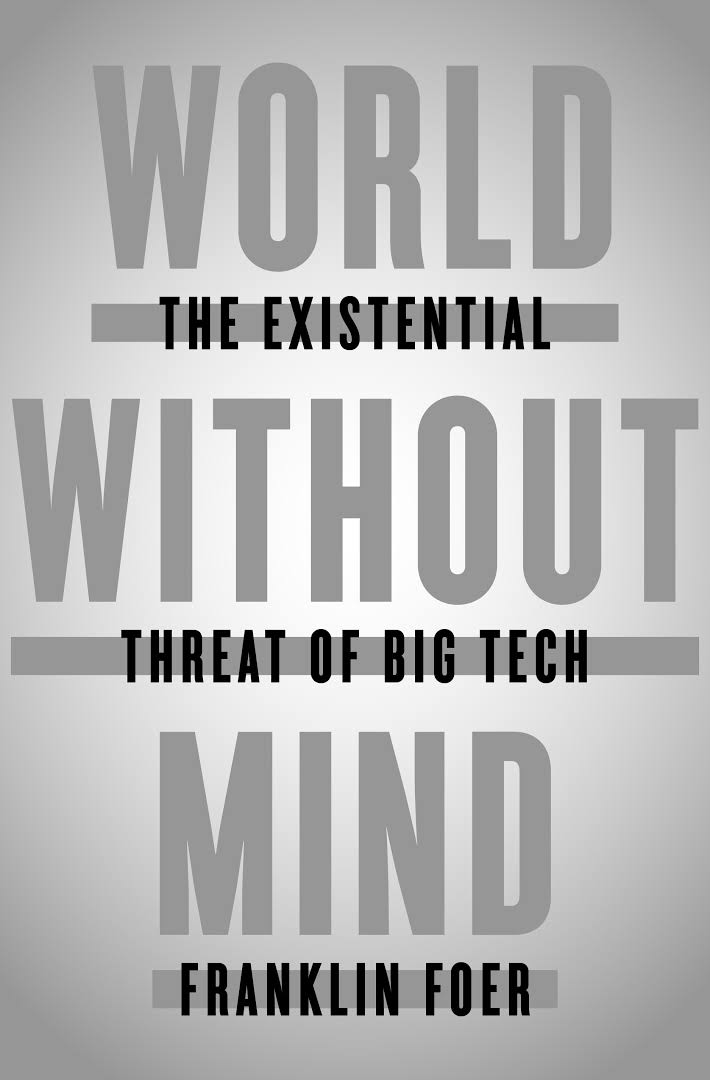
It has been some time since I read a decent essay about technology but I was feeling a bit nostalgic this month, because writings about technology and it how influences us were some of the works that really helped me think creatively about our world, fostering a spirit of curiosity within me at a formative time (Mumford, Ellul, Heidegger, and Postman all come to mind). Unfortunately, Foer’s foray into this matter felt rather shallow and journalistic. Granted, it aspires to an higher level of journalism and drops a lot of big names from the history of Western thought (fluffing up the essay with digression that, I suspect, are not so much smart as designed to make the reader feel as though she belongs to a group of people who are smart), but it never really gets beyond a level of analysis that amounts to saying, big tech is bad because it infringes on our privacy and limits our freedoms and we should go back to reading more books and being more thoughtful as individuals instead of engaging in dissent-discouraging models of groupthink (do I need to read a book to think this?). Still, there were some interesting anecdotes along the way (like the story I missed about Google swiping data from people’s wifi while the Google Maps car was driving around neighborhoods) and there are a few threads, like the connection between Silicon Valley and the countercultural communalism of the ‘60s, that could have been explored in more detail. Foer already thinks this had been done to death by other authors (The Rebel Sell by Potter and Heath comes immediately to mind), but it left me wondering about how exactly Foer understands community, and politics understood as how we do something like “life together with others,” based on his desire for us to create more space for rugged individuals to be geniuses. Foer seems to be a fan of benevolent Conservatism (i.e. Liberalism) wherein our communities are very stratified but those at the top guide us all to a better future via their humanitarian philanthropic activity. Suffice to say, as much as I enjoy reading books, I’m not convinced that Foer offers a very good solution.
5. A Place in the Country by W. G. Sebald.
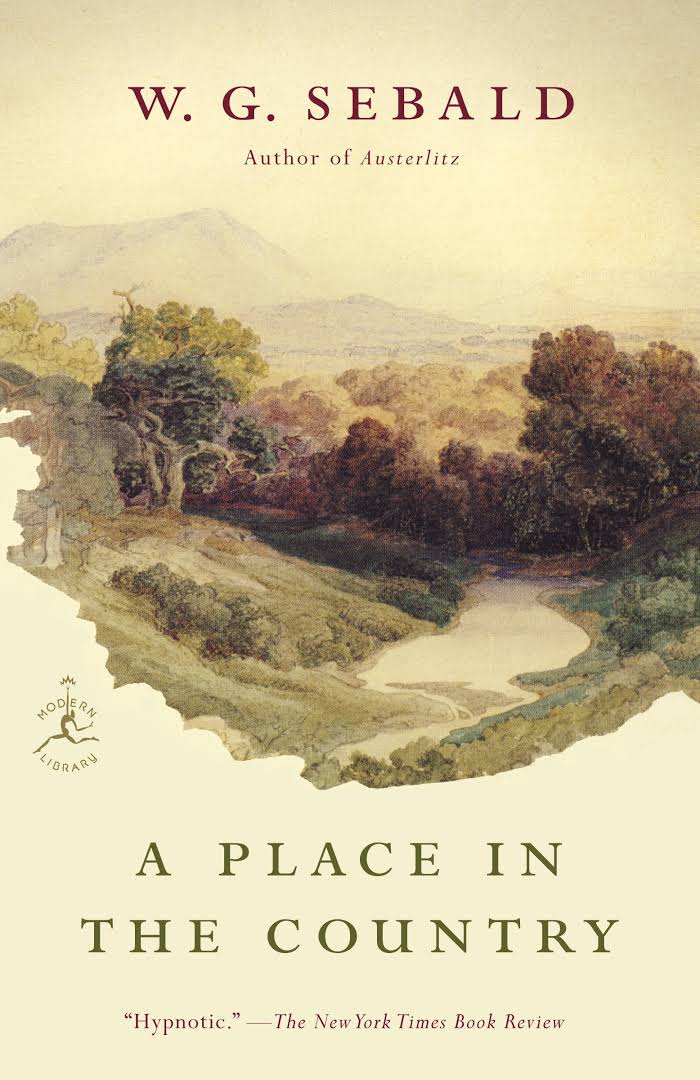
And so, to my dismay, it seems my tour through the works of Sebald has come to a close. I didn’t end with the strongest work (a number of the posthumous publications are not as strong as the novels he published while he was alive, and the change of translators is noticeable), but this collection of essays engaging a series of authors who influenced Sebald considerably over the course of his life, at least provided me with some titles I could look up afterwards. This is one of the benefits of reading good writers – they often point you to other good writers (I’ve started with The Robber by Robert Walser and I’m also currently reading a book that Maggie Nelson mentioned in one of her books). Much of what I appreciate about Sebald is the way in which he mixes mourning with beauty and, despite his knowledge of flora, fauna, architecture, and the histories of various oddities found in a drawer or a painting, a sense of bafflement that borders, even through tears, on wonder. His influence on my writing now is undeniable.
6. Troubling Love by Elena Ferrante.
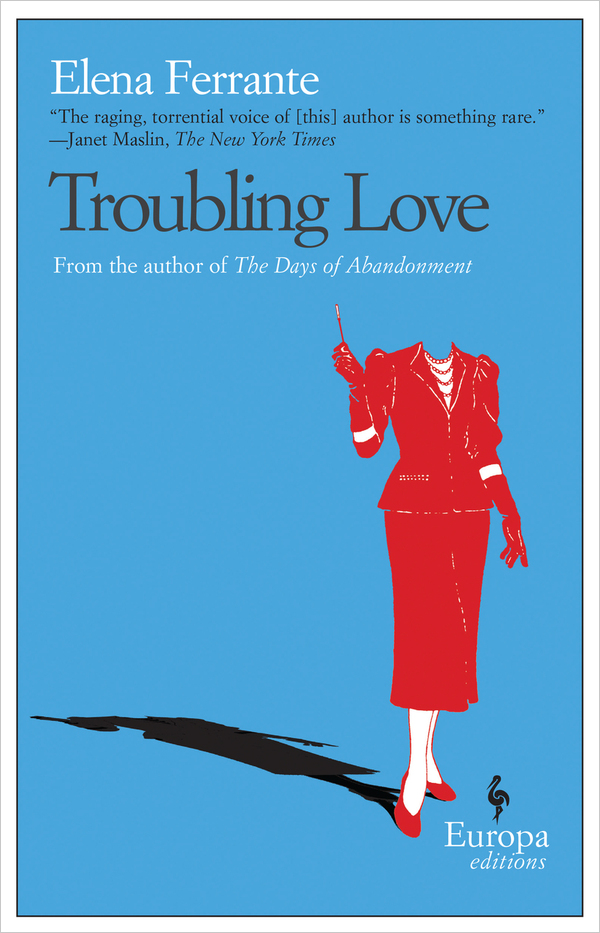
Ferrante’s Neapolitan Series is one of my favourite books and so, after taking a break from her, I thought I’d pick up where she started with her first novel, Troubling Love, which was published to great acclaim in Italy in 1992. It is, in some ways, a product of its time, representing something novel and exciting happening in Italian literature then (it won the Elsa Morante prize), especially with its focus on women, mothers, daughters, and the violence that is ubiquitous in their relationships with men. Ferrante explores this exceptionally well in the Neapolitan Series and the seeds of that are found here but I didn’t entirely enjoy Troubling Love (sin part, because some of the writing felt undeveloped – although, I know, I know, it is unfair to compare an early work to a later masterpiece) and, in part, because the “mystery” element to the story was somewhat off-putting to me. I do, however, intend to read The Days of Abandonment sooner rather than later.
7. Four Quartets by T. S. Eliot.
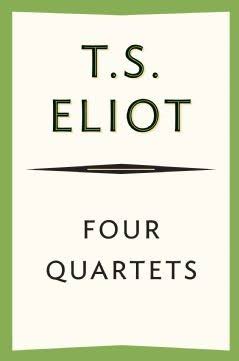
I really don’t know how to review Eliot’s poems (which I fell in love with last month and continued to read this month). I like them very much but I feel I do an injustice to them if I try to say something with them other than what they themselves say. So then I’m left with the option of pulling out passages that I found especially moving and posting them here but, first of all, much of what Eliot does well is build a poem from beginning to end so it’s hard to feel the full force of a passage taken out of context and, secondly, you might as well just read the poems yourself instead of me picking passages for you. So, yeah, I’d suggest you do that.
8. Paul Celan: Selections edited and introduced by Pierre Joris.

One of the benefits of reading poetry is that it makes you a more attentive reader. It’s hard to skim read a poem because you lose the rhythm and, if applicable, the rhyme. Plus, if the poet you are reading is Paul Celan, and you’re already struggling to understand what the hell he is talking about, you have to be doubly attentive. His Death Fugue is appropriately famous (and an exceptional poem), but it is fairly unique among the poems selected here because Celan mostly eschews traditional manners of doing poetry (its traditional structures and, more generally, traditional ways of engaging in poetic sense-making with words). I struggled my way through most of this although there were some short poems, and some lines within other poems, that hit me hard. His short story, “Conversation in the Mountains,” was phenomenal (and, I imagine, must have been an influence on Krasznahorkai).
9. Heine: Poems Selected From Heinrich Heine by Kate Freiligrath Kroeker.

I did not, however, struggle through this collection from Heine. In fact, it brought me a lot of joy and often made me laugh out loud. The dated language (can’t remember the last time anyone used the word “aquail”) was fun but, more than that, the gothic love/ghost stories made me laugh out loud, while appreciating Heine’s influence, across the centuries on artists today like Guillermo del Toro, Gore Verbinski, or Oz Perkins. Although, dang, unrequited love is very highly overrated in this volume! Regardless, I had fun with it and I had a lot of fun reading some of these aloud to Jess. A happy surprise.
Movies
1. The Secret Life of Walter Mitty (2013) directed by Ben Stiller.
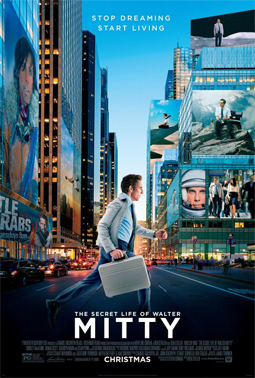
On the surface, The Secret Life of Walter Mitty has incredibly beautiful shots of some of my favourite places in the world, some genuinely likeable, authentic-feeling minor characters, and all the elements of a feel-good story. So it’s easy to walk away feeling, hey, that was nice. But I walked away confused because I felt that way, but I also felt troubled. It was only when I realized that the film was about masculinity that I understood my discomfort (learning that this film is actually a remake of a movie originally filmed in 1947 as an adaptation of a short story by James Thurber – where the sexism inherent to this kind of masculinity is more explicit – helped me also sort out my feelings).
Initially, Walter Mitty is presented as a shy, awkward fellow who works hard (and very well, and, although he doesn’t do anything flashy, his work is critical to the success of others, including his employer). He can never seem to express himself around the girl he likes, his online dating profile is devoid of capture points, he is bullied by bosses in suits, and often indulges in flights of fancy that take him far away from his life as he lives it. As we go through the film, we learn that Walter is like this because his father, with whom he was very close, died when he was thirteen and Walter, who was a skateboarding star, shaved his mohawk a few days later and went to work to support his family. However, flashing back to the present day, through a series of misfortunes that lead to increasingly desperate, exotic, and death-defying circumstances, Walter is transformed into a rugged globe-trotting, wilderness survivor (even making his way into the Guinness Book of World Records). He then gains a new confidence and is able to communicate smoothly with the woman whom he loves who, of course, then reciprocates.
Essentially, despite its beautiful scenery and soft touch, The Secret Life of Walter Mitty is a reassertion of the value of traditional masculinity. Gentleness, shyness, awkwardness, not presuming that women want to talk to you, let alone go out with you, let alone anything else, are seen as character defaults (resulting from the loss of a loving father figure), which must be overcome so that a man can be confident, strong, reckless, attractive, and get the woman he wants. These are the traits — not his gentleness, not the attentiveness he pays to children — that make him a real man. Mitty-Reborn forces himself onto the world and forces the world to be what he wants it to be. And don’t it just feel good! Blah.
2. Evolution (2015) directed by Lucile Hadžihalilović.
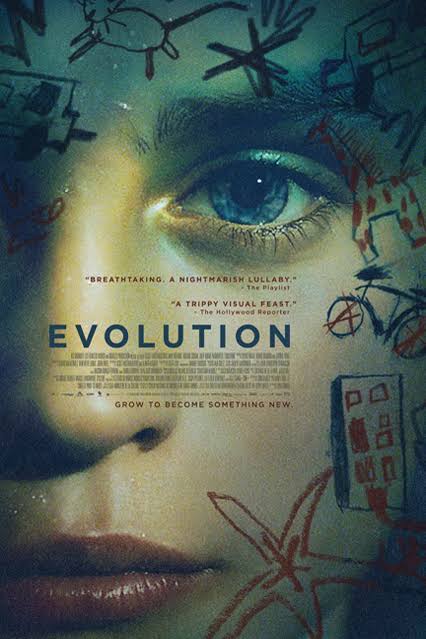
Lucile Hadžihalilović, on the other hand, has no use for men in her films. Her first break-out film, Innocence (which I reviewed last month and found troubling), was populated by girls and women in an enclosed fairy tale world (with shadow men only appearing in the background a few times or, in full Technicolor, only in the closing scene). Now, with Evolution, she presents us with a remote island world of boys and women…ish. Some shots, especially of the coast and the underwater world, are incredibly beautiful, others are eerie, some are unbearable, and, I think, the whole thing is designed to be sensational in the most literal sense. It’s hard to pull of points of comparison with other films because, in some ways, especially the women-sea-starfish combination, it is quite unique. There’s something Lovecraftian about Hadžihalilović’s creative imagination, but this is Lovecraft in a way that can horrify, rather than amuse or delight, contemporary viewers.
Despite the undoubted and increasing mastery Hadžihalilović has of her craft, I found Evolution unsettling and not particularly enjoyable. However, as I thought about it more (especially in contrast to, of all things, The Secret Life of Walter Mitty), I realized that Hadžihalilović has (intentionally or otherwise… reading interviews with her, it seems clear that she isn’t given over to analyzing her films or reading them in too linear of a fashion) created a film that offers a very strong counterpoint to a world dominated by patriarchal exploitation and violence. Here, however, the roles are reversed. Women who are called “mother” do not have be best interests of their children in mind. In fact, they are mostly interested in using those boys as bodies that can host their offspring or, at least, others of their kind… which might very well be a very different species. Boys are impregnated and, what matters, in a very clinical, bleak, and unfriendly environment, is that the pregnancies are carried to term (or at least until a c-section can be performed). We experience much of this as horrifying but, in essence, is reflects the day-to-day experiences of women and girls where even fathers are not safe. If there is an evolution here, then, it is not simply that a new life may have come from the sea (la mer which is very close to la mère), but that women have turned the tables and are now treating males the way they have been treated.
3. The Transfiguration (2016) directed by Michael O’Shea.

I confess that I am a sucker for a well-made, innovative, or beautifully rendered vampire film. For what can easily be a campy or poppy subgenre of horror (from Bela Lugosi’s Dracula and Anne Rice’s Interview With a Vampire to more recent adaptations like True Blood and Twilight), there is a surprisingly high number of very well done vampire films (pride of place goes to Let The Right One In, but Only Lovers Left Alive, Thirst, and, of course, Nosferatu all come to mind immediately). Michael O’Shea knows all this and, in fact, is very explicit about his influences (hence the Nosferatu reference on the poster). He freely poaches not only plot elements, but even certain scenes (which, alas, don’t play as well as they do in the original). Of course, this poaching is, itself, worked into the plot as the teenage boy who may or may not be a vampire is a big fan of vampire stories and rates them according to how “realistic” they appear to be to him. And, really, The Transfiguration is a good enough film by itself that I didn’t mind this too much.
In the foreground, it does a good job of exploring childhood trauma that, given the right set of circumstances, can result in the utter devastation of the traumatized child, producing a brokenness from which there is no obvious recovery. As such, The Transfiguration is a tragedy and it is, in my opinion, well told, but it is a tragedy in a twofold sense. Because, in the background, The Transfiguration is also about race, poverty, and war in America. Here is a teenage black boy growing up in the projects, whose mother suicides, and whose older brother is left caring for him but who, himself, is a war veteran (Afghanistan? Iraq?) who is mostly incapacitated by what he saw “over there” (and so he spends his days and nights sleeping on the couch, having lost all his friends, watching infomercials about how to get rich). The gang of young men who hang out in front of the building, and their police interactions, are also well acted in a believable manner which, again, quietly comments on race and poverty in America (this seems realistic, as the protagonist would say).
In light of this, I find it interesting that all of the victims of the boy are white. And, with one exception (who is collateral damage, much like the older brother is collateral damage, as are many others whose dismembered bodies the older brother witnessed overseas), they are all white men. White men who either think that a young black man can be used however they see fit (it is implied, but not certain, that the boy meets some of his victims in public washrooms that may be locations of MSM sex work) or who think they are impervious to harm because they are white and male. Here, I think, the title of the film is significant. The doctrine of the transubstantiation is a Roman Catholic belief that the bread and wine of the Eucharist are transformed, during Mass, into the real body and blood of Jesus, sacrificed on the cross for the guilt of humanity. What, then, is the transubstantiation taking place here? (Because, I think, it is too simple to see the title as simply a reference to the drinking of blood.) Although the boy wants to see his acts of blood drinking as a part of becoming-vampire, I think it is more compelling to view his acts of murderous violence as his way of becoming-white in a world where being black (and black and poor) consigns one to the status of being undead. As such, it becomes another form of reckoning – a judgment upon white guilt and a judgment that comes, not from the cross, but from the lex talionis, where the sins of the fathers are visited upon their children (as the Manic Street Preachers reminded us all those years ago, “if you tolerate this, then your children will be next”). But, as the boy learns, becoming-vampire/becoming-white is unbearable. It is no way to live and it inevitably leads him to betray his own people. Although the movie presents this betrayal as an escape, it should not be forgotten that the only escape here, for boys who are black and poor and traumatized (unlike for girls who are white and poor and traumatized and who can escape to relatives elsewhere) is death.
4. Boys in The Trees (2016) directed by Nicholas Verso.

Boys in The Trees is kind of like Tarkovsky’s Nostalghia but for hipsters who grew up middleclass and white, straight and male, in the ‘90s, and who wish they were still there. Only instead of Russian literature and Italian art, it’s Peter Pan for a crowd too jaded for innocence and fairies; instead, it has wolf packs, bullying, childhood trauma, and a number of scenes that look a lot like Bat For Lashes first breakout music video. It’s more The Lost Boys than lost boys (hence, the fangs that the protagonist imagines on the villain early on).
But Verso’s film highlights the problems of trying to create something that is cool (but, like, hipster cool, ya know?), with little regard for the events that are used to propel the plot. But you still need a better investment in story and character even if you want the atmosphere of an authentic looking model to carry the piece. I mean, dangit, even the names that the bullies use – I get it, names like “faggot” and “retard” were ubiquitous in the ’90s — are used to create authenticity, but I don’t think there’s much about Boys in the Trees, as it stands, that merits us chilling with this re-creation.
It’s too bad because, if a few things had been changed, Boys in The Trees could have been a much more interesting movie. There are two big reveals at the end of the film. The first was cliché and poorly played but the second was well done and, thinking back on the movie after watching it, there are actually a series of fun clues that tip you off about it along the way (although I only realized what they were afterwards). The first big reveal would have been much more interesting – and brought a much better angle to an exploration of toxic masculinity in teenage boys – if the two boys who had grown up together, and then split apart, ended up being the primary romantic relationship in the movie (instead of the girl who seems to only be present to be a love interest). In this sense, I think Boys in the Trees was a real missed opportunity.
5. Super Dark Times (2017) directed by Kevin Phillips.
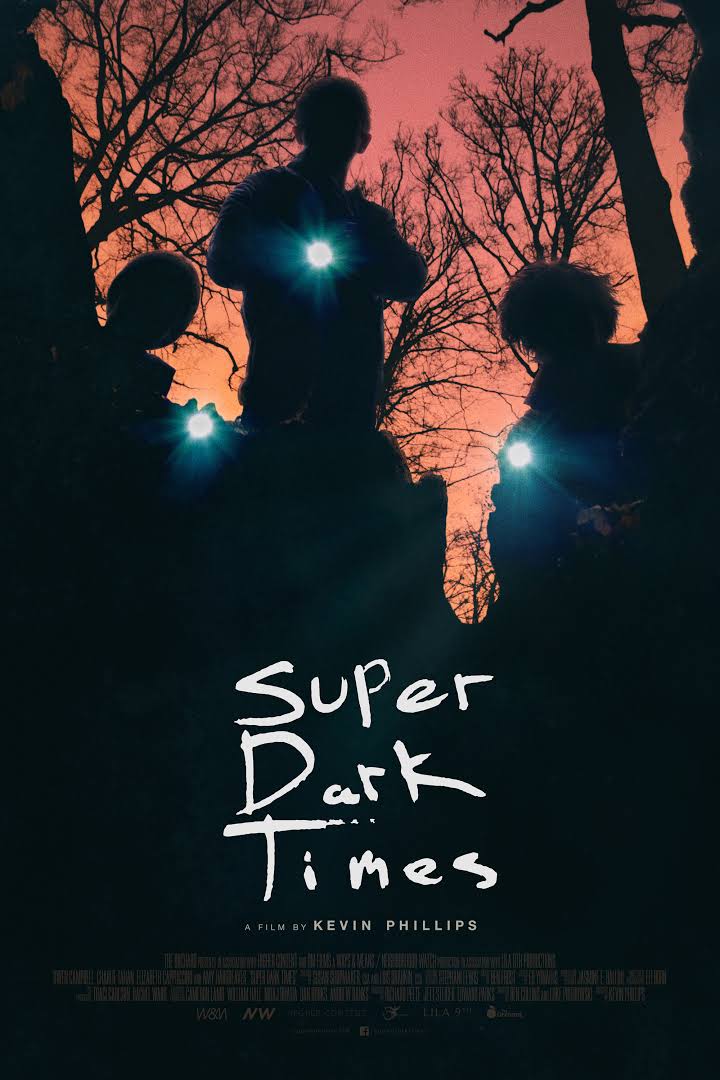
Super Dark Times is an outstanding début from Kevin Philips. Granted, it has some flaws – trying to present a “strong woman” motif in the final scene seems contrived in a movie that is mostly about boys, and much of the final act, perhaps inevitably, is a bit of a letdown given how generic it is and how not generic the rest of it feels — and, yes, it is still working within a particular genre and can’t quite break out of the restraints that imposes.
It is another period piece set in the ‘90s, following a group of young adolescent boys who ride their bikes through the streets and empty spaces on the edges of suburbia in upstate New York, but there are three things that make it notable. First of all, it is genuinely suspenseful and is probably the scariest film I’ve watched since It Follows (which spooked me quite a bit even though, as a whole, I thought It Follows was pretty overrated and had some deeper problematical elements that Super Dark Times avoids). Secondly, the acting is exceptional. Teenage years are full of complex feelings that are often confusing to those who experience them and when you add some serious trauma to that mix, along with some deceit and concerns about possibly losing one’s grip on reality mixed up with the possibility that one’s bff might have crossed over into an even darker place, all of this can be rather difficult to portray in a convincing manner, let alone an impressive manner, but Super Dark Times achieves this. From the boy too traumatized to kiss the girl he has a crush on, to the girl who won’t wait around for him forever, to the more awkward fellow with an angry streak, to the single mom connecting with her son as much as her work schedule permits, everyone impressed me. Thirdly, and most significantly, what Phillips does exceptionally well, is establish a mood for the viewer that carries through the entire film. It begins with the opening shot of a fall day and a broken window at a school, which, we discover, was caused by a stag that has, for some reason, jumped through the glass and is now bleeding to death in an empty classroom (and the mood only drops slightly, when everything explodes at the end and then in the conclusion). Unlike Verso who, I think, is trying to get the perfect picture in Boys in the Trees (a boy… on a bike… at night… wearing a clown mask… with flares on the ends of his handle bars!), I think Phillips understands that the mood you create via a series of pictures is more powerful than one single outstanding shot and that mood has to be crafted into everything, not just lumped into this or that scene.
But what is it about this movie that suggests its title? A terrible accident happens, people struggle to process this and this results in more people getting hurt… but what are the “super dark times” being portrayed here? I think the answer to this question is another factor setting Phillips work apart from other nostalgic and artsy hipster period pieces (I’ve been trying to think about this nostalgia in indie horror — but also bursting into the mainstream with Stranger Things and the remake of It and I’m still unsure what to think about it). I think Phillips argument is that kids who grew up in the ‘burbs in the ‘90s (often, themselves, not too far removed from poverty), who were frequently left to themselves because their parents were working increasingly hard (either due to single parenting or both parents needing to work, leading the creation of “latchkey kids” like those in the film), in order to try and sustain the American dream. But this dream was already fraying around the edges – hence the violence that is a relatively normal part of the life of the kids – knocked down by bullies, hand broken while biking, a kid in gym who is hurt and runs crying through the halls of the high school, another kid who has an outburst in the library, not to mention the fact that Phillips makes sure to show us that, when everything explodes, there are also small children who witness part of what happens. What we have are kids who are isolated and left to themselves but who experience violence and trauma. Based on how this plays out with the central characters, Phillips seems to be telling us that doing this with children as they develop can lead to mental illness, disaster, and truly brutal acts of violence. What and when, then, are Phillips’ super dark times? They are the everything that has happened since then. They are America after Colombine, after Sandy Hook, after Iraq and Afghanistan, and into the reign of Trump. Phillips is just trying to understand how we all got here and went along with it.
Documentaries
1. Tomorrow We Disappear (2014) directed by Jimmy Goldblum and Adam M. Weber.
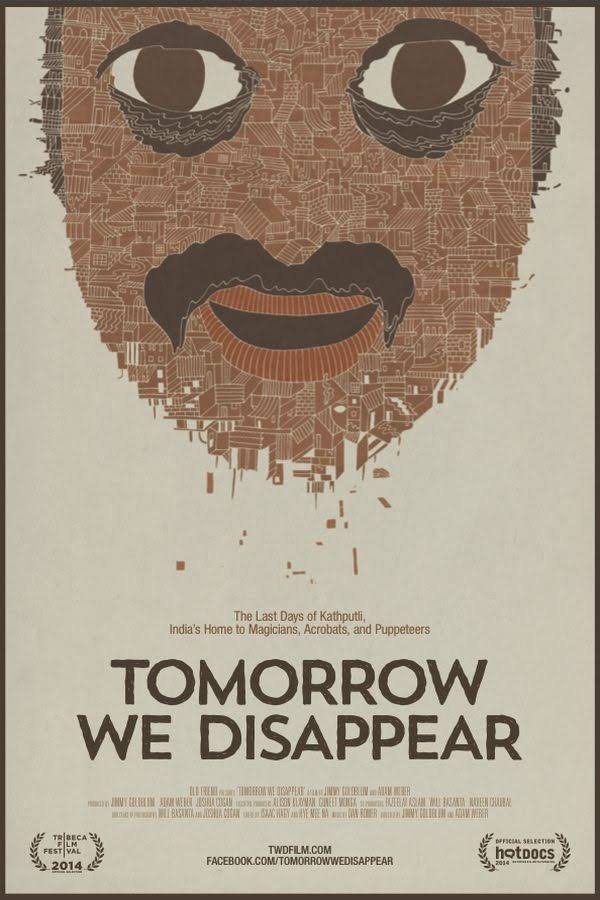
I have been looking for this film for three years and, thanks to an act of kindness from a friend, I finally saw it. It is about an artists’ community in Delhi named the Kathputli Colony. The people live mostly in poverty, but they are not ashamed of who they are. They are proud that they practice arts (puppetry, magic, acrobatics) that go back hundreds of years, with skills being passed on from one generation to the next, and they are proud to represent their country and bring joy to the people around them. They are, I think, a truly unique community of people. But, alas, they are not meant to remain. The land they live on – and where they have built their homes – is owned by the government which sells it to a real estate developer intent on building luxury condos. The community organizes to resist this, they do not expect that they will be treated like less-than-animals, many don’t believe that they will actually be forcibly relocated – but we all know how this story goes by now. Everywhere, across the globe, it is the same and the neoliberal city belongs to the developers and no one else and, what they want, they get. And so, a concentration camp is built for the artists (wherein they no longer have the room they need to keep the items they need to practice their crafts, wherein it looks like the crafts will stop being transmitted from generation to generation) and, although the movie ends on a semi-hopeful note, a simple google search reveals that the bulldozers still came, with the police and paramilitary forces and that the community was still destroyed and that they people, despite their faith, hope, or acts of resistance, are still moved to the Lager. Having seen three communities I love(d) deeply destroyed in the way, this was hard for me to watch. It’s devastating. It’s like watching a movie with footage of an animal now gone extinct. There are no words for losses like these.
2. The Red Pill (2016) directed by Cassie Jaye.

Oh boy, where to even start with this one? I decided to watch this film because myself and others opposed a local group of MRAs when they tried to bring it to town (one viewing at a small library was canceled, one viewing at the central library took place). Still, it’s good to familiarize yourself with the arguments of those you oppose and so I thought I’d sit down and watch the whole thing instead of simply dealing with reviews. For others considering doing the same, I can safely say that you needn’t bother. The reviews (not the ones posted by MRAs, occasionally posing as feminists) are more than adequate.
The Red Pill is a film that claims to be a critical but open-minded examination of Men’s Rights Activists (MRAs) by the female lead and Director, Cassie Jaye, who is an actor-turned-director and, as she says several times in the film, a feminist. However, the film was funded by MRAs (and supported by Breitbart) and so, to the surprise of nobody, by the end of the film Jaye has seen the light (taken the red pill as per Neo in The Matrix) and renounced feminism. And, yeah, if I were to try and make a misogynistic propaganda piece, in order to try and make well-known rape apologists more palatable to mainstream society, I’d probably want it to star and be produced by a woman who claims to be a feminist.
The whole thing is very amateurish and the bias is obvious. When the rape apologists speak, Jaye often overlays their words with facts or reports or images or whatever that appear to confirm what they are saying. When the feminists speak, we are left just looking at them. Furthermore, the only thing Jaye’s video diaries (cuts and all) convinced me of was that she probably made a smart move when she decided to get out of acting. I mean, come on people. How can anybody think this is anything but a propaganda piece? But, yeah, MRAs, and rape apologists, aren’t generally known for their subtlety of presentation. Here, for example, are two not-subtle things Paul Elam, from “A Voice for Men,” a prominent person in the documentary, has said (although Jaye never asks him about these words, despite the oh-so-scholarly research she is shown doing… on Google):
[Young women go through life] with the equivalent of a I’M A STUPID CONNIVING BITCH – PLEASE RAPE ME neon sign glowing above their empty little narcissistic heads.
And:
Should I be called to sit on a jury for a rape trail, I vow publicly to vote not guilty, even in the face of overwhelming evidence that the charges are true.
(Fuller collection of quotes here.)
More recently, post-production of The Red Pill, Elam suggested that the true victims in the Harvey Weinstein case weren’t the women who used sex to get what they wanted from a men, but were those women who were considered too ugly to be cast on a couch.
So, yeah, the leaders of the MRA movement aren’t known for their subtlety and, I think, those drawn to the movement aren’t looking for subtlety anyway. It’s mostly preaching to the choir and, if I try and think about who it is trying to recruit or convince, I’m guessing that the target audience is angry, young white middleclass or upper middleclass, men. All the more reason to make The Mask You Live In required viewing for young people.
2. Raising Bertie (2017) directed by Margaret Byrne.
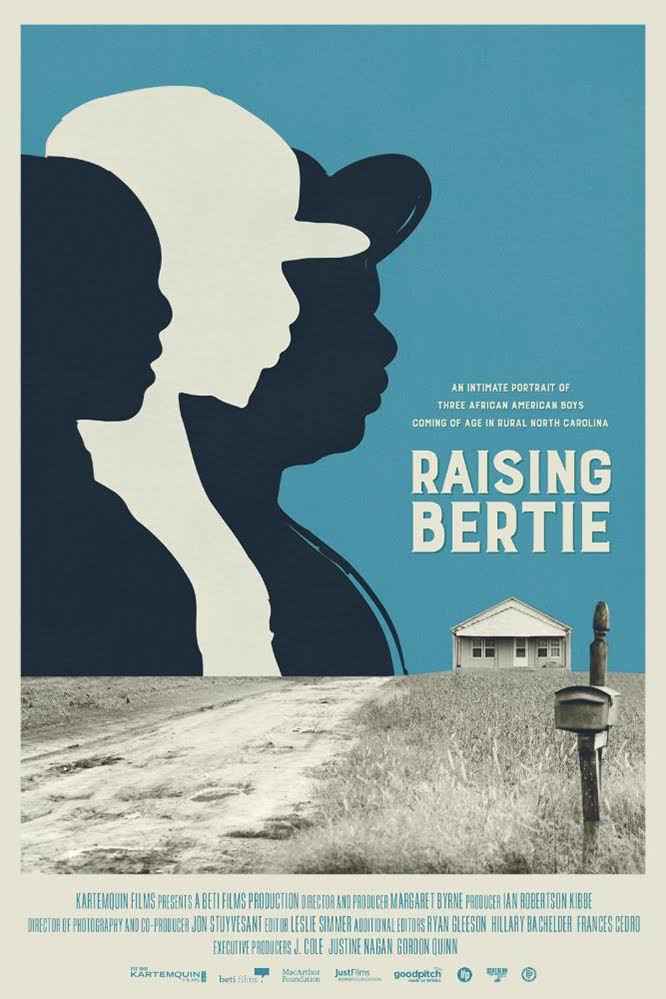
I really like what Margaret Byrne set out to do with Raising Bertie – spending six years following the lives of three young black men in a small county in rural North Carolina and, with those lives, explore themes related to race poverty, education, health care, income stability, childhood, manhood, and fatherhood, in America – but, as the length of that list suggests, that’s a lot to cover in 102 minutes. Unfortunately, I don’t think Byrne is able to do justice to these topics, let alone her subjects of scrutiny, although she certainly tries. I think there was far too much skipping around, making it difficult for the viewer to really engage as deeply as some viewers (certainly this viewer) might wish. It felt more like a series of vignettes or dioramas, which we briefly looked on before moving on to the next. And, given the amount of time that passes during the making of this documentary, it did leave me wondering, “why was this vignette selected and not something else?” or “why was this story-line dropped and this other one introduced?”
There is also the problem that, as Byrne herself admits, people in Bertie County wanted her to also focus on some of the other youth – some middleclass black youth, perhaps, or a particular bright student, or the local basketball star. Yet Byrne says she chose to focus where she did because the three young men she selected are, in her words, more truly representative of Bertie County, even if the residents of that County do not want to admit that. Now, I don’t mean to suggest that Bryne’s portrayal of these men, or of Bertie County as a whole, is unsympathetic but here we have an urban white woman (from Chicago, previously a Creative Director at Universal Music and the producer of a series that, according to her IMDB Bio, “launched MTV in Africa”), determining which men from a rural black community are representative of that community, regardless of what people from that rural black community are saying to her. That’s actually a pretty big problem. Thankfully, there are many better documentaries about race, class and gender in the USofA (including some by white directors like The Black Power Mixtape 1967-1975, but that is a great example of a director taking direction from the community of people represented in the film… something Byrne doesn’t seem inclined to do).
3. Icarus (2017) directed by Bryan Fogel
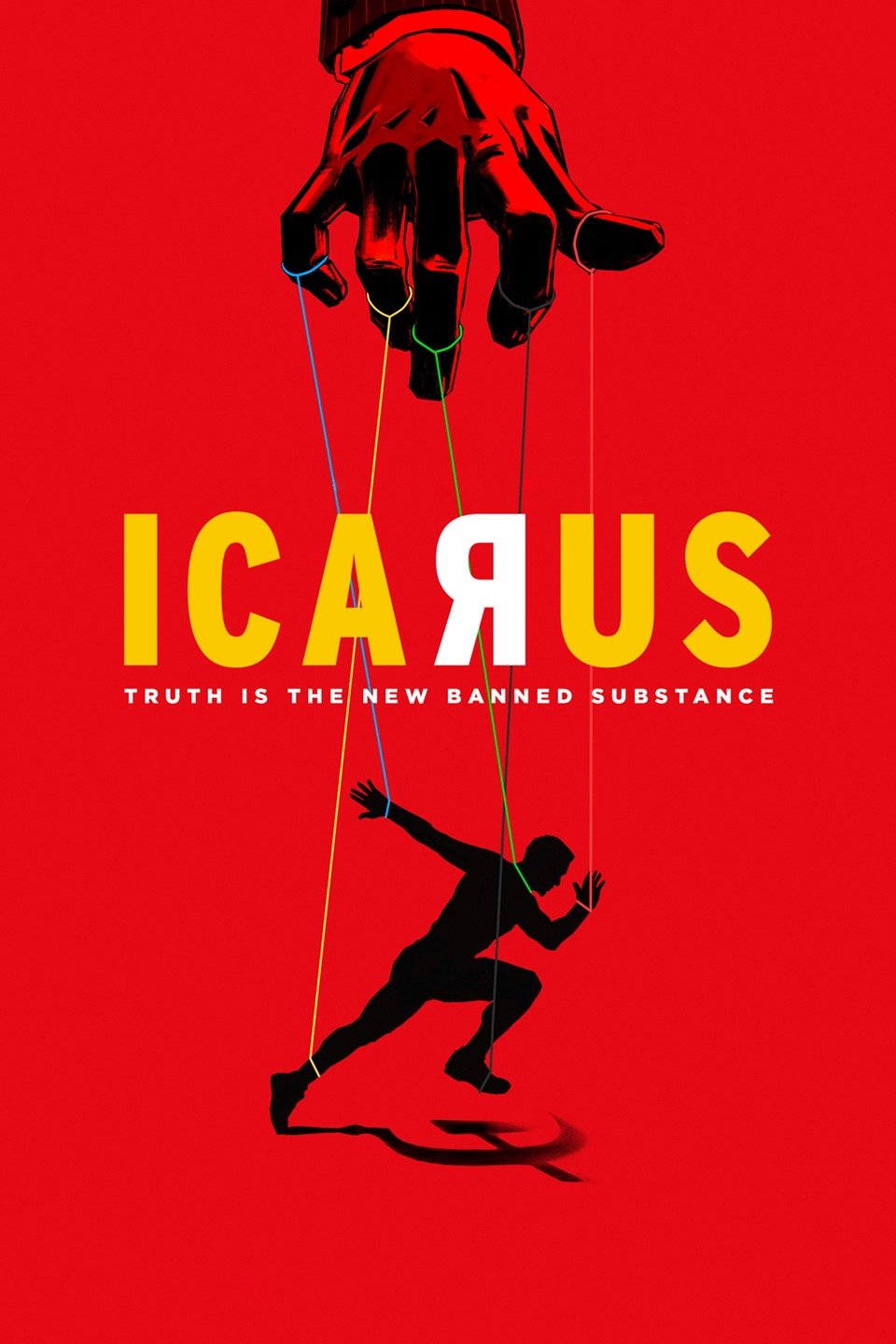
After watching The Imposter, I’ve been on the lookout for another great documentary that ends up some kind of mind-blowing twist. Unfortunately, Bart Layton sets that bar impossibly high (Dear Zachary comes close but it’s absolutely heart-breaking; Tickled also gives it a shot but came up short). However, I heard that there was a sudden, unexpected and heart-pounding development in Icarus and so, knowing nothing about it, I decided to watch it.
Maybe it’s because I’m not a huge sports fan, but I felt that it was more hit than miss. I suspect that the current political climate (especially as it pertains to the USofA and Russia) has more to do with how distributors got into a bidding war over this film than the actual quality of the film. The first fifty minutes (and it does run just over two hours) could have probably been reduced to about five minutes… but I understand that road bikers really like to look at themselves on bikes (and, really, if I had thighs like that, I’d want to look at them all day, too). Granted, there were a few tense moments, like when Grigory Rodchenkov – the Russian anti-doping and anti-anti-doping expert who became the whistleblower behind the Russian Olympic doping scandal – flees Russia and when one of his close associates dies under mysterious circumstances and he begins fearing for his own life, but, even in those moments, I was left wondering what Fogel wasn’t showing. I suspect that American authorities were involved far sooner than Fogel lets on (and I suspect the FBI was running security on Rodchenkov’s apartment in California, rather than just showing up there one day out of the blue as Fogel presents things). Still, there is no doubt that, for Fogel, all of this ended up being a major WTF twist in his plans and his life and there is no denying that, as a first time documentary filmmaker, he accidentally stumbled onto a scoop, with an insider perspective, that any documentary filmmaker would envy. And Rodchenkov is a larger than life kind of person and probably anybody could film him and be entertained by the results. So, if sports (especially road biking but also the Olympics) and doping scandals are your kind of thing, I imagine that you’ll enjoy this. If not, I’d give it a pass.
4. The Punk Syndrome (2012) directed by J. P. Passi and Jukka Kärkkäinen.

Pertti Kurikan Nimipäivät (Pertti Kurikka’s Name Day) was a Finnish punk band that, in 2015, made it to the semifinals in the Eurovision competition. This documentary follows the band as it first rose to fame, presses its first record, and goes on tour. Also, all the members in the band have developmental disabilities. At least two (maybe three?) of the members grew up in orphanages and live in a group home now (the fourth member is at home although his parents are encouraging him to move into a group home… him being the band’s drummer may be a factor in that… people usually only want to be roommates with drummers for a limited amount of time…). This factor, I think, is enough to catch the attention of any viewer, but what makes the documentary great is that it manages to show the life of the band members while avoiding romanticizing them, exploiting them, or being overly sentimental and trying to manipulate the emotions of the audience. This is a hard line to walk when creating documentaries focused on vulnerable populations honestly and, in my opinion, a lot of documentaries – even highly praised ones – fail to walk it well. So mad props to Passi and Kärkkäinen for what they accomplish here. It’s an incredible tale, all the more moving and poignant for the manner in which it is told and the revelations that come out, simply in conversation or in a song’s lyrics. It presents us with something wonderful not only about the human spirit, and all the challenges people face in relationships and in living, regardless of whether or not they are differently-abled or disabled (while also bringing attention to some of the challenges unique to people who are differently-abled or disabled), but also about punk rock. Because the core of punk rock, and what always drew me to it (apart from the music itself), is its radical inclusiveness of anyone regardless of how poor they were or how different they looked or how much they didn’t fit in elsewhere. Punk was ahead of the game in almost every way – in forming community spaces where people of different skin colours were welcome and also in forming communities that were queer friendly and inclusive (and when the fascists and neo-nazis tried to take over the scene, the punks bashed ‘em out hard enough and often enough to keep them out) – and so I can’t really think of any other music scene were Pertti Kurikan Nimipäivät would be able to not only grow but thrive and, in the words of Toni their drummer, perform fucking awesome motherfucking gigs. Recommended viewing.
My review of your reviews: There is a hell of a lot of great writing here; I hope it ain’t neglected. Obliged.